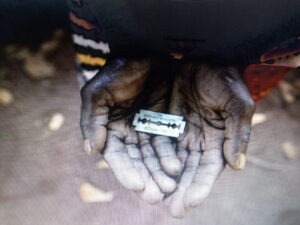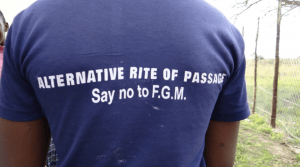Peres Munanka, a teenage activist from Tanzania, discusses female genital mutilation and how to break the cycle of tradition.


Peres (right) checking her test results (Kitenga Girls School Secondary).
My name is Peres Munanka, I am a young girl of 17 years old from a tribe that practices female genital mutilation. But I thank God that my parents never saw the benefits of this practice and thus no female in our family is circumcised, the first generation in our lineage to break from this tradition. While my family was never ostracized because they did not practice FGM, many families aren’t as lucky.
What is Female Genital Mutilation?
Female genital mutilation (FGM) is also referred to as Women’s Circumcision. It is practiced in not less than 30 countries worldwide and most of them are in Africa. There are four main types of female genital mutilation and these are;
- Total removal of female’s genital organ
- Scratching the inner part of the female’s genital organ
- Partial removal of the female’s genital organ mainly the clitoris
- Cutting any part of the female’s genital organ
All these are unacceptable as they bring devastating impacts to circumcised women. In the case of Tanzania, the first and the third type of female genital mutilation are the most used.
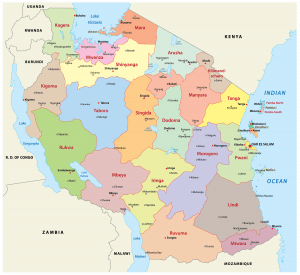
There are two main tribes in Tanzania that circumcise women and these are Kurya and Maasai. According to the report of 2017 on FGM in Tanzania, it is a fact that female genital mutilation is still practiced in many parts of Tanzania and there are five main regions that lead in conducting of this practice;
- Manyara: 58%
- Dodoma: 47%
- Arusha: 41%
- Mara: 32%
- Singida: 31%
Nevertheless according to the women who circumcise it is said that 86% of women are usually circumcised. Whereas 25% of children under the age of 1 year are also circumcised and 28% of children who are 13 years old and above are also circumcised. In accordance to that some pregnant women are usually circumcised before giving birth. Many children who are born by a mother who is circumcised are also likely to be circumcised. This practice is done without any medical reasons. It is mainly for enhancing male dominance in every aspect and thus women are considered inferior. While the trend is going down, the practice is still widespread and deeply rooted.
But 95% of women who have been circumcised are against this practice and they wish that it may end.*
If there’s no medical reason for FGM, why is it still practiced?
According to traditions, girls who are not circumcised are considered prostitutes. And therefore many girls are circumcised with a belief that it will bring them respect in their communities. Sometimes, girls are circumcised in order to seem mature and eligible enough to be married. Getting married and having a family is a dream for most of the women, but in some circumstances, it’s considered a way of getting money especially in the villages due to the fact that bride price, maybe in cows, is paid and therefore through marriage the woman’s family can have needs sustained.
- Tool used for the cutting.
Most of the times circumcised girls are married to older uneducated polygamous men who believe that a respectable woman to be married is the one that has been circumcised whereas they are married with a high bride price; while the uncircumcised ones are considered prostitutes and therefore cannot be married by the village men. But it is also a business for the ones who circumcise the girls and therefore a means of them to earn money just like any other job.
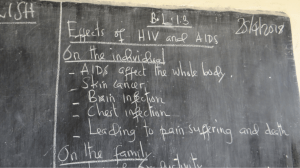
Taken on the school blackboard.
This practice has a lot of negative effects to women. The effect include loss of too much blood, spread of diseases like HIV, complications during delivery, psychological problems, permanent scar to the genital organ and last but not least is death. In accordance to that, many educated men are not willing to marry a circumcised woman and thus the women regard themselves as people who are not worth enough and the worst part is that some women were circumcised when they were so young and thus they grow up to discover it later that they were circumcised.
How to stop the cycle of FGM?
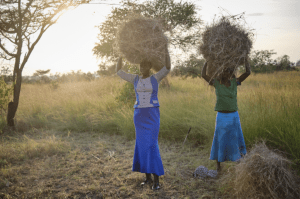
There are two ways that we can stop the practice of female genital mutilation. I am positive that if the ones who circumcise (Ngariba) stop circumcising then the cycle can be broken, unfortunately this is difficult because this is their only source of income and would otherwise be jobless.
If the girl has not got an education it’s risky to stay in the village as they end up getting circumcised. If they run away and try to find life in the city, it’s really rare and tough to succeed in such conditions as they meet other tragedies such as engaging in prostitution. Different centres such as Jipe Moyo are really life-saving to anyone in crisis who needs help.
“Women can emancipate and build their future through education, because if a woman is ambitious and serious in studying and if she is successful then that means she has a better chance of leading her own life.”
By educating women and girls we can empower them to be financially self-reliant and not depend on marriage to ensure her security.
- Teachers at the Kitenga Girls Secondary School speak out agains FGM.
I can barely end this practice but I believe that my story is important, my voice matters and my dream counts. I will always speak up for those who were never heard or those who are not strong enough to speak for themselves and one day to reach the goal whereas women will not have to undergo such torture and humiliation.
About the author: Peres Munanka is a recent graduate of the Kitenga Girls Secondary School in the Mara Region of Tanzania. The school is a women’s empowerment initiative launched by the Immaculate Heart Sisters of Africa. As Peres waits for her next course of study to begin, she is volunteering with Girls Education Collaborative (GEC), a US-based NGO that helped the Sisters build, open and now grow the school. Peres is a fierce human rights advocate and speaks often about the destructive cultural traditions that rob girls and women of their dignity and rights.
Learn More:
World Health Organization
Equality Now
United Nations: End Female Genital Mutilation Day
Anti-FGM Board
